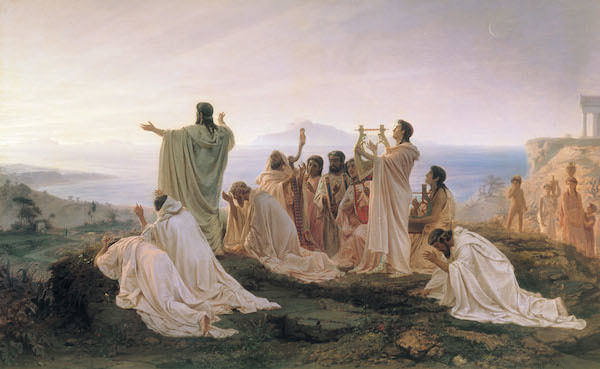Primitive Pythagoreans
 The Pythagoreans were students of Pythagoras' school of thought.They subscribed to Pythagoreanism,a philosophy that was dominated by mathematics and mysticism.
The Pythagoreans were students of Pythagoras' school of thought.They subscribed to Pythagoreanism,a philosophy that was dominated by mathematics and mysticism.
A Pythagorean triple consists of three positive integers such that .
A triple is said to be primitive if , and are co-prime to each other( ).
There are primitive triples with and as shown below.
Find the number of primitive Pythagorean triples with and ?
Details and assumptions
- You may assume that the triplets and are the same when counting.
- This was inspired by a projecteuler problem
- For more about Pythagoreans and irrational numbers take a look at Peter's note on the discovery of irrational numbers .
- There is a great interactive tutorial on pythagorean triples here .
The answer is 159139.
This section requires Javascript.
You are seeing this because something didn't load right. We suggest you, (a) try
refreshing the page, (b) enabling javascript if it is disabled on your browser and,
finally, (c)
loading the
non-javascript version of this page
. We're sorry about the hassle.
This is the same as counting the couples of integers ( u , v ) such that: 1 ≤ u < v ≤ 1 0 0 0 , u 2 + v 2 ≤ 1 0 6 , g cd ( u , v ) = 1 and one integer between u and v is even. With a couple of cycles we get the answer: 1 5 9 1 3 9 . This is very close to 2 π 1 0 6 and not by chance, since the asymptotic probability of two random integers in I = [ 1 , N ] of being coprime is π 2 6 and the asymptotic probability of two random integers a , b ∈ I to satisfy a 2 + b 2 ≤ N 2 is 4 π .